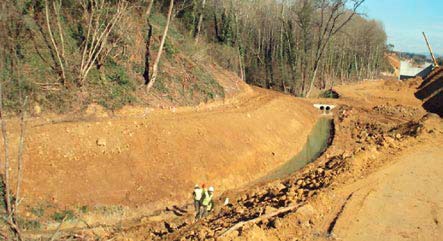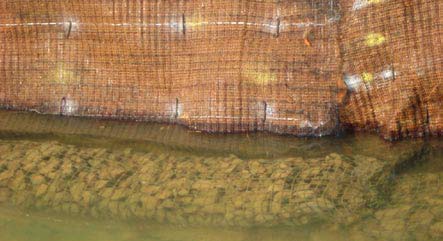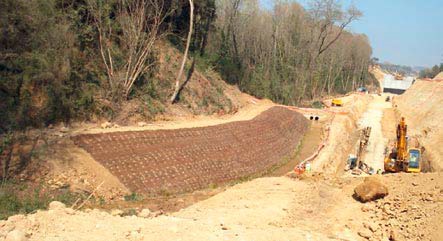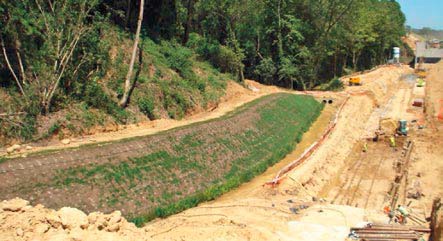High Speed Line Barcelona – French border Vilademuls-Pontós Line
Description of the Environmental Measure.
Problem detected:
The High Speed Line route on the Vilademuls-Pontós section affects Casinyola Stream, because of the construction of a wall which differs to that initially planned for the project.
Because of mapping errors in the original project, the route of the wall needed to be altered, so that the new route trespass the stream channel. It required permanent diverting of the Stream Casinyola on a stretch of about 80 meters in length, and proceeded to the new demarcation, fixation and stabilization to prevent, among other things, loss of soil by erosion.
Due to these circumstances, it was necessary to use an intervention system to maintain the course of the water in its new location and to prevent it from travelling to its original location, following the dynamics of the watercourses. To achieve this goal and also ensure the optimal environmental integration of the channelling system, FCC CONSTRUCCION proposed using bioengineering techniques and slope stabilisation, which are perfectly suitable for this purpose given the low estimated speed of the water in this stretch of the Stream.
Solutions adopted:
In order to improve the ecological condition of the channel of the Casinyola Stream in an area equal to that occupied by the construction of the wall, and to promote the functionality of the stream in this stretch as an ecological connector, a set of environmental integration measures and compensatory measures were proposed.
- By applying bioengineering techniques for setting the new channelling system, it was intended to integrate environmentally the new channel of the Casinyola Stream with the surrounding riparian habitats, thus restoring the continuity of the riparian vegetation along the river banks. To achieve this, the new stretch of the waterway was delimited by a new slope protected with a permanent geo-grid extending in the direction of the current. The foot of the slope was fixed by flexible gabions made of multi-fibred polypropylene mesh, to the channel bottom and to the extended geogrid. On top of these components, coconut fibre coir rolls pre-cultivated in nurseries offsite were placed, at the expected height of the water surface in the channel and they were fixed by wooden pegs. Eventually, a channel with a total width of 3 metres at the base between the slopes allowed water to flow.
- Through the restoration of the riparian autochthonous vegetation, it was to maintain this stretch of the Casinyola Stream in a good condition of conservation. In the areas affected by the channel diversion and the construction works of the platform, the riparian vegetation of the zone was restored, to maintain its function as corridor and area of refuge for the fauna. To ensure a rapid implantation of vegetation, hydroseeding with a combination of grasses and selected autochthonous legumes was performed on all of the slopes protected with geogrids, in two stages: before and after placing the geogrid. Shrubs were also planted such as Sambucus nigra, Clematis vitalba, Ruscus aculeatus, Hedera helix, Cornus sanguinea and Salix cinerea on the slopes which are protected with permanent geogrids.
Results:
Bioengineering techniques and implanting of vegetation grant avoidance of soil erosion, thus achieving perfect landscape and environmental integration for the area. Furthermore, it is ensured that the river dynamics adapts the watercourse and the vegetation in its surroundings to the existing situation prior to acting.












